Probiotic bacteria is your friend
You might think bacteria in your food is a bad thing—and it in some cases it can be (food poisoning, anyone?). But in live-culture yogurt, beneficial bacteria can help keep your gut healthy, say nutrition researchers—and these so-called probiotics may even help you lose weight.
“Even though probiotics are a huge buzzword lately, we’re really only starting to learn about how they work in our bodies,” says registered dietitian Karen Ansel, a member of the Academy of Nutrition and Dietetics. “The most important thing to know is that they are strain-specific—meaning, while one type may help with immunity, another might be better for gut health.”
Yogurt is a great source of probiotics because it is made by fermenting milk with these live bacteria. But not all probiotic yogurt is the same.

The probiotic strain game
U.S. guidelines state that yogurt must contain at least two specific strains, Streptococcus thermophilus, and Lactobacillus bulgaricus, although manufacturers can add more. “It’s easy to assume that all yogurt is the same, but that’s not the case at all,” Ansel says.
Only three families—Lactobacillus, Bifidobacterium, and Streptococcus—have been widely researched, and the data suggests they may improve immune and digestive health and protect against yeast infections in women. In fact, these are the kinds nutritionists trust most. But probiotic yogurt brands vary in other ways, from the number of strains they contain to the amounts in each serving.

Fermenting yogurt confusion
So how do you know whether a probiotic yogurt will really give you the health benefits you’re after? “It would be great if we knew how much live bacteria was in our yogurt, but this can vary substantially depending on the quantity of bacteria used during fermentation as well as storage conditions and length of storage,” says Ansel.
The closest gauge we have, she says, is the Live and Active Cultures seal, which certifies that the yogurt had at least 100 million cultures of live bacteria per gram at the time it was manufactured. Probiotics have a relatively short shelf life, so eating yogurt before its best by date increases your odds of getting a healthy dose, she adds. We asked nutritionists what their favorite probiotic yogurt brands are. These are the results.
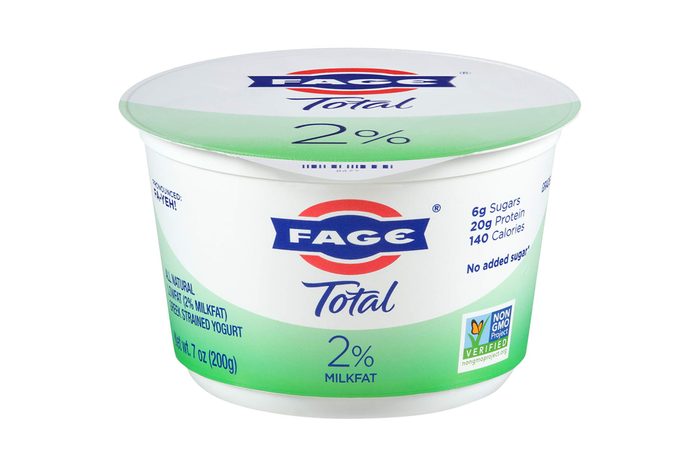
Fage 2% Plain
$1.39
In general, Greek yogurt—it’s been strained to make it thicker—tends to have more protein. Think of it as yogurt concentrate. Ansel likes this brand, (pronounced Fa-yeh) because it doesn’t have a lot of added sugar. “Looking for grams of sugar on the nutrition label can be helpful, but remember that milk naturally contains some sugar,” she says. A better tactic: Take a good look at the ingredient list to see if sugar has been added. “I’m a big fan of buying plain, unsweetened yogurt and adding fresh fruit, some crunchy nuts, and a drizzle of honey or maple syrup,” says Ansel. “It’s got way less sugar and a delicious tangy taste.” If you’re not a yogurt fan, here are the best probiotic foods that aren’t yogurt.
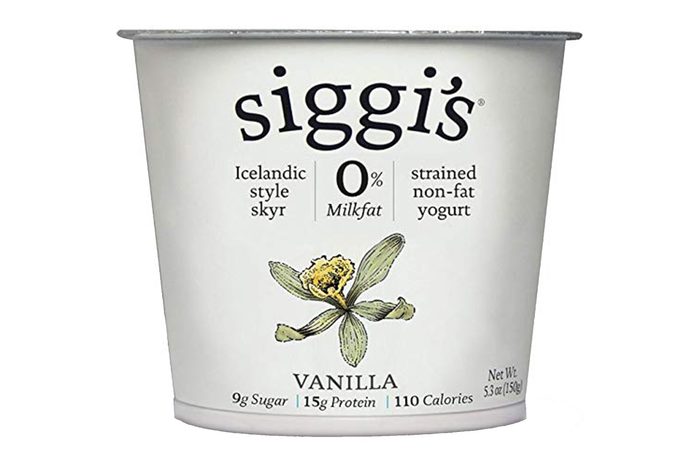
Siggi’s Vanilla
$1.69
“There are several brands of yogurt on the market now that have done a great job of reducing added sugar while still delivering loads of flavor,” Ansel says. This brand, which calls itself “Icelandic-style” is another of her favorites. And don’t forget, in addition to probiotics, yogurt is a great way to work in calcium, protein, and potassium, too.
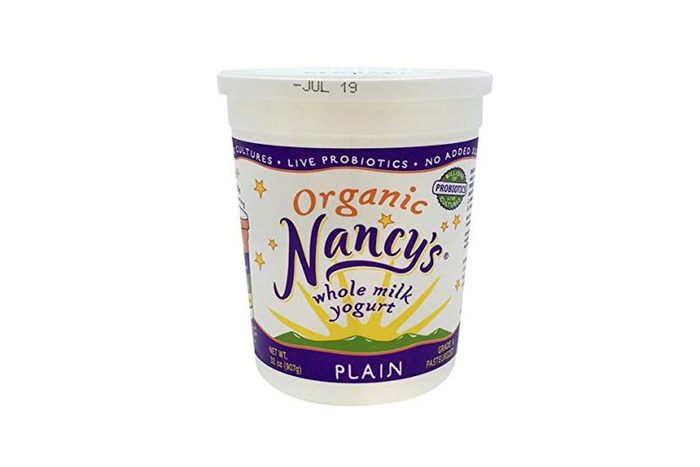
Nancy’s Probiotic Whole-Milk Yogurt
The “Nancy” behind this brand is a member of the International Probiotic Association, and the label lists specific strains probiotic strains, such as B. lactis BB-12 and L. acidophilus LA-5, which are added to the yogurt after fermentation.
Registered dietitian Jessica Crandall Snyder is a fan, mainly because the whole-milk yogurt is thick, which makes it easy for her to add prebiotic fiber, hemp seeds, chia seeds—and more probiotics. “Yogurt is probably not the most cost-effective way to get true probiotic strains, and relatively few probiotic strains are available,” she says, so if you’re really serious about getting probiotic benefits, supplementing is the way to go, she says.
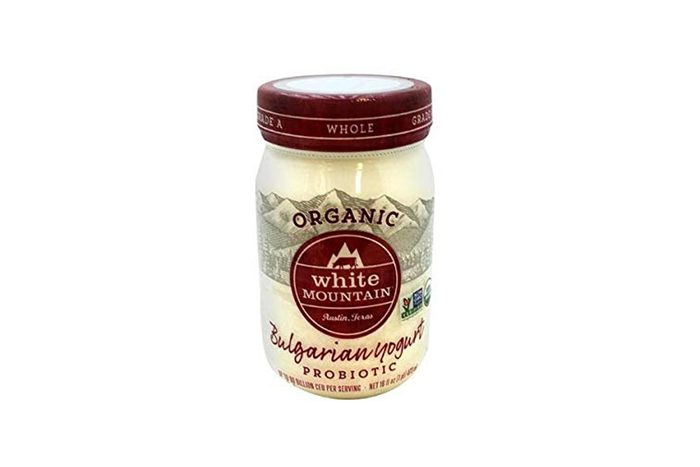
White Mountain Bulgarian Yogurt
$9.78
Add Bulgaria to the growing list of countries and regions claiming their own unique style of yogurt. This brand (which is fermented from milk that comes from mostly Texas cows, incidentally) claims to be a source of probiotics, though the label only lists L. acidophilus and B. bifidum in addition to the yogurt starter cultures, Crandell Snyder says. Still, she calls it “delicious” and touts its abundance of live, active bacterial cultures, which can contribute to general gut and digestive health, but may not be recognized as targeted probiotics.
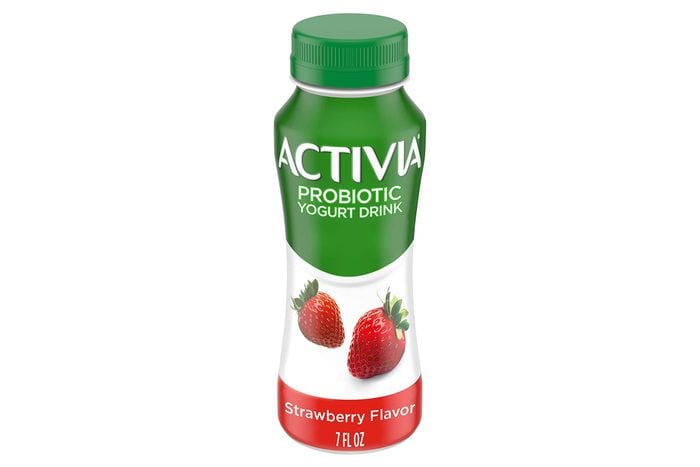
Activia Probiotic Dailies
$1.39
These low-fat probiotic yogurt drinks come in several flavors, and some varieties include prebiotic fuel (the stuff probiotics thrive on). All Activia products feature the signature probiotic culture Bifidus (B. lactis DN-173 010/CNCM I-2494), which was specifically selected because of its ability to survive passage through the digestive system and reach the large intestine in sufficient amounts, plus four additional live cultures. Clinical research has shown these may help support gut health, says registered dietitian Kristie Leigh, a spokesperson for Danone North America. Here are some more probiotic foods you can add to your diet.
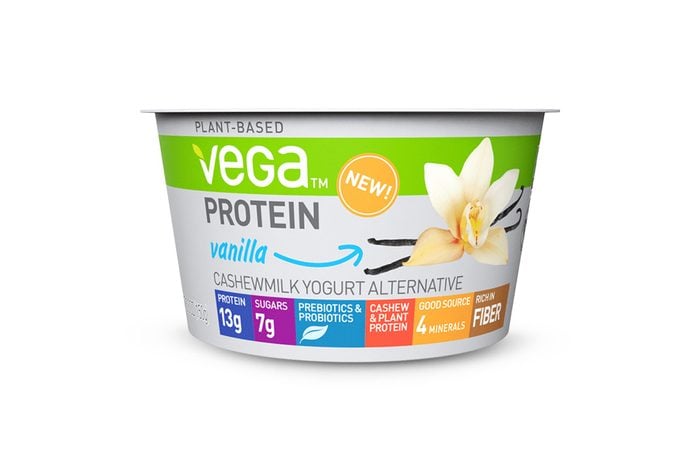
Vega Protein Cashew Milk Yogurt Alternative
$2.59
Vegans need not worry about missing out on probiotic yogurt benefits. This plant-based dairy substitute packs more than 10 billion live and active probiotics into each cup, according to Leigh. Dannon also makes Good Plants, an almond milk-based vegan option containing B. lactis, BB-12 Probiotic, which seems to boost with gut health.
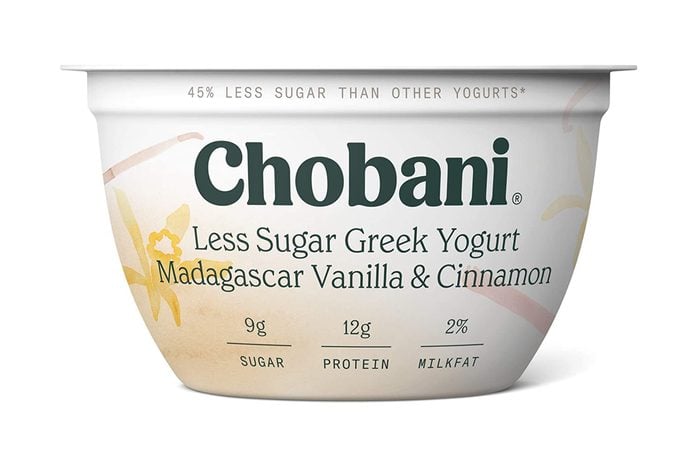
Chobani Less Sugar
$1.39
In addition to two starter cultures (L. bulgaricus and S. thermophilus), Chobani adds four quality live and active probiotic strains including L. acidophilus, L. casei, L. rhamnosus, and Bifidus. This version, with 9 grams of sugar per serving, is a nice compromise for those who like some sweetness with their digestive and immune benefits but can’t stomach plain probiotic yogurt. If you want to learn more about probiotics, check this out.
